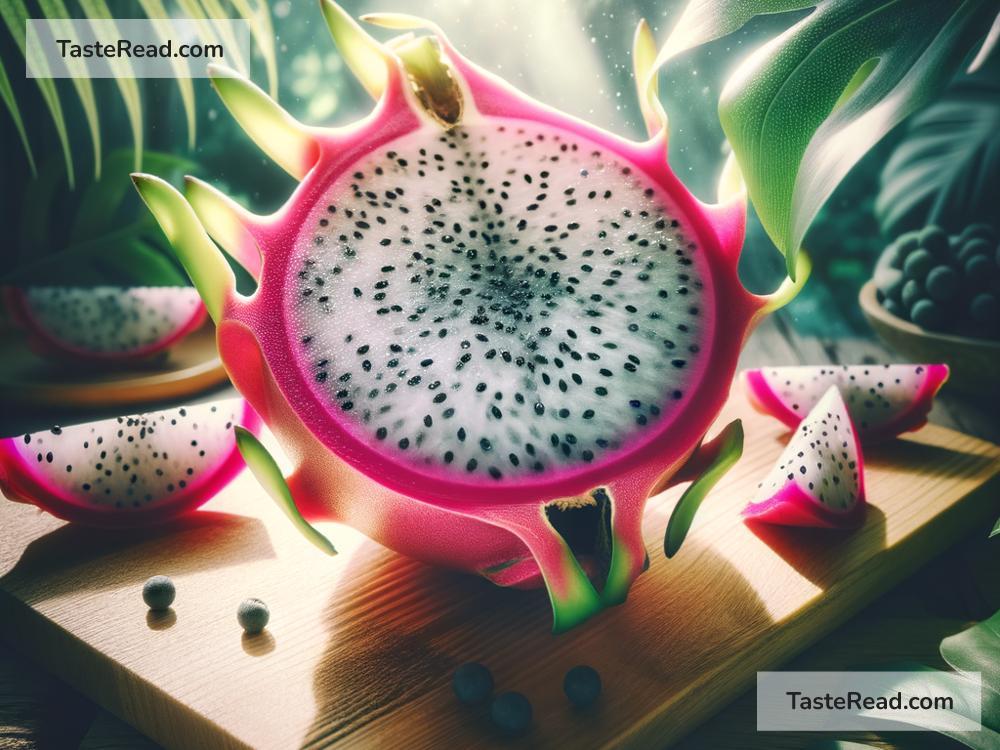Why Dragon Fruit Is Called the Mystical Fruit
Dragon fruit, also known as pitaya or pitahaya, is a tropical fruit that has captured the hearts of people around the world. With its striking appearance, rich nutrient content, and fascinating history, it’s no wonder that this unique fruit is often referred to as “the mystical fruit.” But what makes dragon fruit deserve such a magical title? Let’s explore the reasons why this fruity superstar stands out and has earned its mystical reputation.
1. A Magical Appearance
The first thing you notice about dragon fruit is how exotic and eye-catching it looks. Its bright, vibrant skin ranges from fuchsia pink to yellow, with green, leaf-like scales along its surface. Many people say these scales resemble the fiery scales of a dragon, which is where the fruit gets its name. Inside, dragon fruit is just as stunning. It features white, pink, or even deep red flesh speckled with tiny black seeds.
This unusual and colorful appearance feels like something out of a fantasy story, making dragon fruit seem almost otherworldly. It’s a fruit that sparks curiosity and wonder—two feelings often connected to mystical things.
2. Nutritional Superpowers
Dragon fruit isn’t just beautiful; it’s also packed with nutrients that make it special. This fruit is rich in Vitamin C, which supports a healthy immune system, and has plenty of antioxidants that help the body fight off harmful toxins. It’s also high in fiber, which promotes digestion and keeps you feeling full for longer.
What’s especially amazing is that dragon fruit offers all these health benefits while being low in calories. Eating dragon fruit can feel like indulging in something luxurious while still taking care of your health. For many, this combination feels almost magical—it’s rare for something to be both delicious and good for you.
3. Mystical Origins and History
Dragon fruit has a mysterious history tied to faraway landscapes and ancient traditions. The fruit originally comes from Central America, where it was cultivated by the Aztecs hundreds of years ago. The Aztecs treated dragon fruit with great respect, valuing it for its unique taste and medicinal properties.
Later, dragon fruit made its way to Southeast Asia, where it flourished in tropical climates. Today, it’s commonly grown in countries like Vietnam, Thailand, and the Philippines, and is often used in traditional medicines and rituals. Its journey across cultures and continents adds to its mystical aura—it’s a fruit that has traveled far and connected people in different parts of the world.
4. Symbolism in Culture
In many cultures, dragon fruit is seen as a symbol of prosperity and good fortune. Its dazzling color and unusual shape are often associated with luck and positive energy. For instance, in Chinese culture, it’s said that dragon fruit can bring balance and harmony, and some people even use it as an offering during celebrations or special occasions.
The dragon itself is an iconic creature in Chinese mythology, representing power, wisdom, and good luck. The fact that this fruit is named after such a legendary being reinforces its mystical image.
5. An Enchanting Experience for Your Senses
Dragon fruit doesn’t just look magical—it also offers a delightful sensory experience. When you slice open a dragon fruit, the colors alone are enough to inspire wonder. Its soft flesh feels smooth and juicy, and the tiny seeds add a subtle crunch. The flavor is mild, slightly sweet, and refreshing, sometimes compared to a mix of kiwi and pear. Eating dragon fruit feels like a unique and playful adventure for your taste buds.
Plus, dragon fruit is incredibly versatile. It can be eaten raw, blended into smoothies, added to fruit salads, or even turned into colorful desserts. It’s a fruit that inspires creativity in the kitchen, making it feel even more enchanting.
6. Healing and Wellness Properties
In traditional medicine, dragon fruit is believed to have healing properties. Some say it can improve skin health, boost energy levels, and help with overall wellness. Its high antioxidant levels may also slow down signs of aging and protect cells from damage. The idea that this fruit can promote both beauty and health contributes to its mystical reputation.
Moreover, dragon fruit is known to be hydrating, thanks to its water-rich composition. In tropical countries, where heat and dehydration are common, dragon fruit is often enjoyed as a refreshing snack that replenishes the body. To many, the ability of this fruit to rejuvenate and energize makes it feel almost magical.
7. A Global Favorite
Finally, dragon fruit has achieved worldwide popularity. From the bustling streets of Bangkok to the trendy cafes of New York City, dragon fruit is loved for its exotic charm and versatility. Its global appeal has contributed to its status as a mystical fruit—a symbol of discovery, adventure, and connection.
Conclusion
Dragon fruit is called the mystical fruit for many reasons: its vibrant appearance, nutritious qualities, and cultural significance all make it feel extraordinary. Eating dragon fruit isn’t just about enjoying a tasty snack—it’s about embracing a little slice of magic in your day.
Next time you come across this strikingly beautiful fruit, take a moment to admire its colors and reflect on the fascinating journey it has taken through history. Whether you enjoy it fresh or blended into a smoothie, dragon fruit is sure to make you feel like you’ve uncovered something truly special—something mystical.


